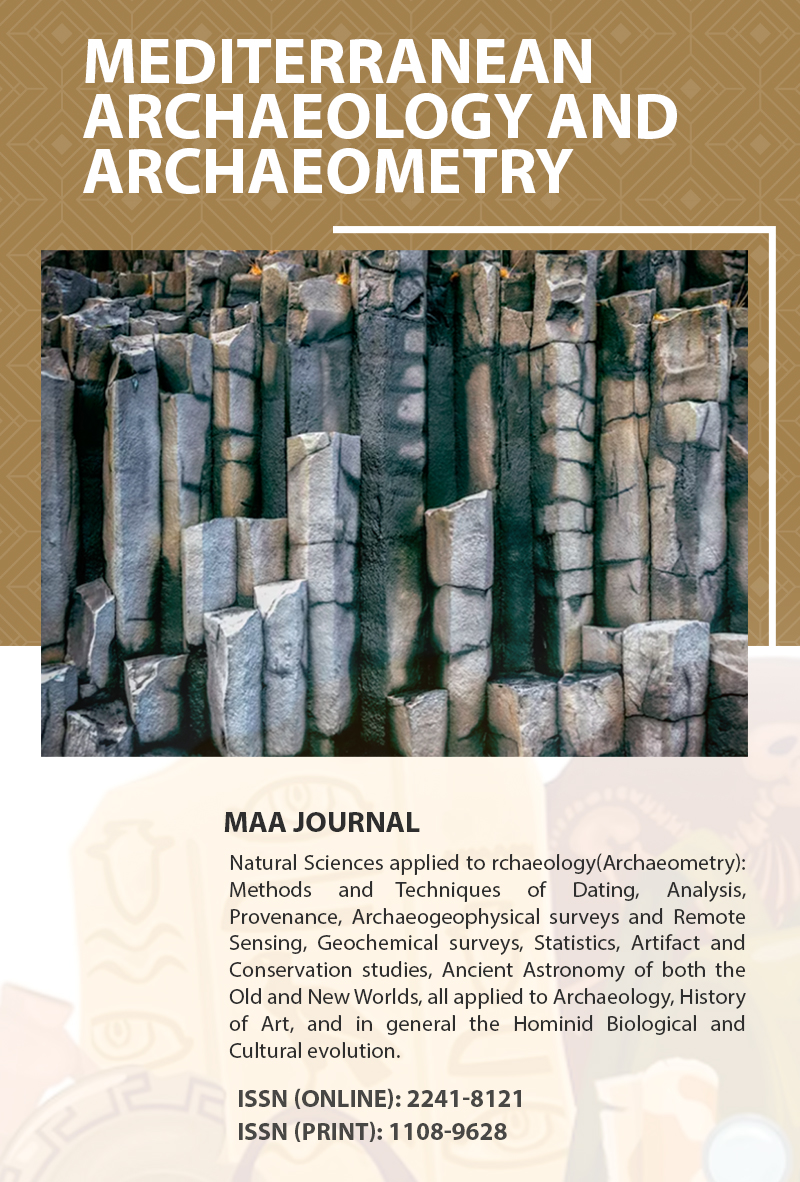ARCHAEOLOGICAL BRICKS AND TILES FROM SOUTHEAST BULGARIA- DETERMINATION OF RAW MATERIAL AND PRODUCTION TECHNOLOGY BY CHEMICAL, PHASE, AND THERMAL ANALYSES
Keywords:
Late Antique and Roman ceramic tiles and bricks, thermal analysis, phase analysis, chemical analysisAbstract
This work deals with Roman and Late Antique bricks and roof tiles from eight archaeological sites in Southeast Bulgaria. The samples’ study was through X-ray fluorescence, powder X-ray diffraction, Fourier transform infrared, and thermal analysis, supported by macro and micro observations. The results indicate the successful combination of the experimental methods to determine with great accuracy the mineral composition and type of the raw clay (regarding the content of carbonate phases), the firing technology, and some findings of high ceramic quality and durability over time. This work shows that the clay type (calcareous type - carbonate-rich clay or non-calcareous type - carbonate-poor clay) cannot be determined by using chemical analysis only. The clay type determination is only possible by combination with thermal analysis in the case of ceramic firing below the calcite decarbonation temperature and by taking into account only the CaO amount included in the clay as calcite, which is calculated from the measured mass loss of calcite decarbonation. The results prove that for a more precise determination of the ceramic firing temperature range, it is necessary to use not only the phase composition (mineral-thermometers), but also the structural features of minerals determined by Fourier transform infrared and thermal analyses. The results evidence the use of identical ceramic manufacturing technologies in the entire geographical area during the Roman and Late Antique periods and a clear perspective for future investigation. They also complement the known archaeological background by interpreting people’s knowledge continuity from the Roman age to Late Antiquity and giving insight into their economic and cultural life, based on the ceramic experimental investigations.










